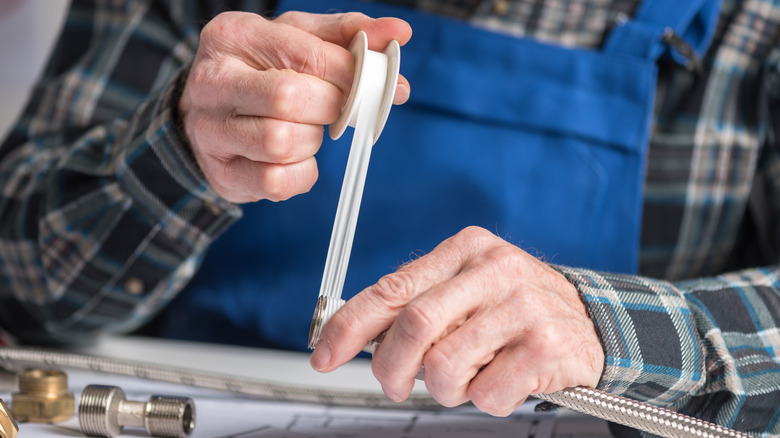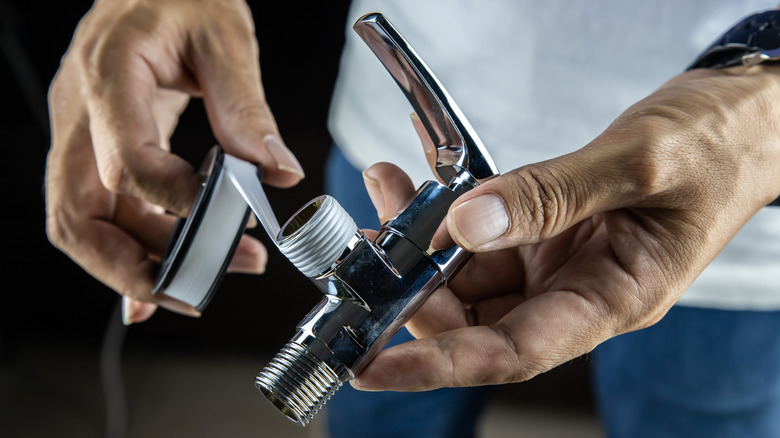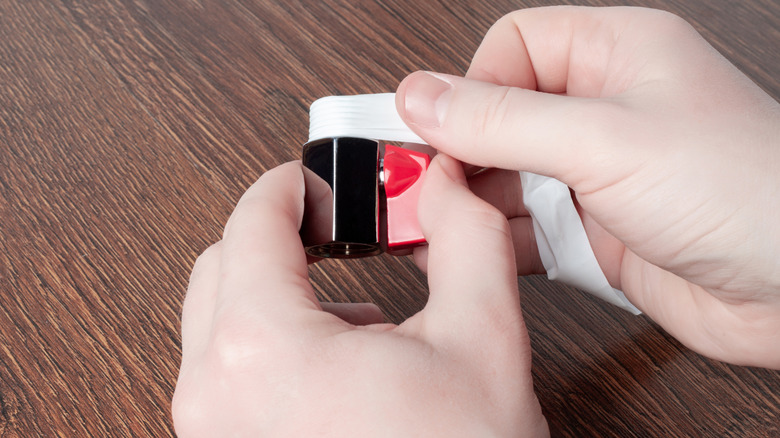Avoid Making These Mistakes When Using Teflon Tape For Plumbing At All Costs
Teflon tape goes by many names, including plumber's tape and PTFE tape. No matter what you call it, the stretchy, smooth material is a handy helper for fixing minor plumbing issues. The waterproof tape helps you get a good seal on plumbing connections to prevent leaks, but only if you apply it correctly. Common mistakes that homeowners make with Teflon tape include applying it in the wrong direction, covering the end of the pipe, using the wrong amount, and skipping pipe preparation.
Like many basic DIY home improvement projects, repairing plumbing connections requires a little prep work to be successful. You want the pipe threads to be clean and dry before applying the tape to make sure it sticks well. Even a little dirt or debris on the threads can keep the tape from going on smoothly and creating a secure seal. Dry the threads after you clean them to help the tape adhere properly.
If the pipe has plumber's tape on it from a previous repair, remove the old tape first. The old membrane might be loose, which keeps you from getting the best possible seal. Teflon tape usually comes off easily because it's not sticky like traditional tape. If some of the old tape stays behind, a wire brush can help get it off.
Applying plumber's tape the wrong way
When you're looking for the fastest way to repair a leaking pipe, you might rush and not think about how you're wrapping the tape. But wrapping the tape the wrong direction is a major mistake that will affect how well your plumbing fix works. For most pipes, you want to wrap the tape around the threads in a clockwise direction as you're looking at the male threaded end of the pipe. If you wrap it counterclockwise, the tape will likely start to unravel or bunch when you screw the two pieces together because you'll be screwing the connection against the tape. To make sure you applied it correctly, watch as you screw the pieces together to see if the tape bunches.
Another common application error is placing the tape over the edge of the pipe. You don't have to cover the edge of the pipe and the first thread. If you do, part of the tape will cover the opening of the pipe. Since PTFE tape is so stretchy, it could cover a large part of the opening if you apply the tape too close to the end of the pipe. Instead, align the tape with the second thread, leaving the first thread and the edge of the pipe exposed. Work away from the pipe's opening as you wind the tape around the threads.
Using too much or not enough PTFE tape
When wrapping your pipe threads with Teflon tape, you don't want too much or too little. The purpose of the tape is to help create a secure connection between the pieces. If you go too light on the application, there won't be enough tape to create a tight seal between the two plumbing pieces. That could allow the connection to leak.
However, going bigger isn't always better. While you need to apply enough tape, if you put too much on the threads, the tape will be too thick. This puts excess strain on the connection and could cause it to crack, creating more leaking issues. For most projects, like changing your outdated showerhead or fixing a leaky connection, wrapping the tape around the pipe three or four times is sufficient. However, the thickness of the tape can affect how much you need to apply.
Overlap the previous pass of tape about halfway to get good coverage. You should pull the tape taut without pulling it so tight that it causes strain on the threads. When you're done wrapping the pipe, smooth down the edges to help keep the tape in place once you screw the two pieces together.


